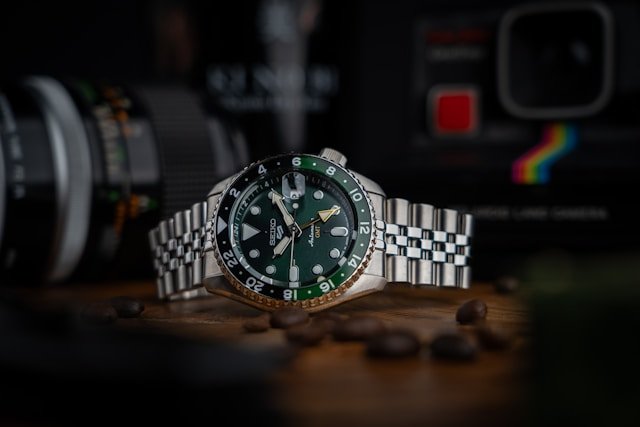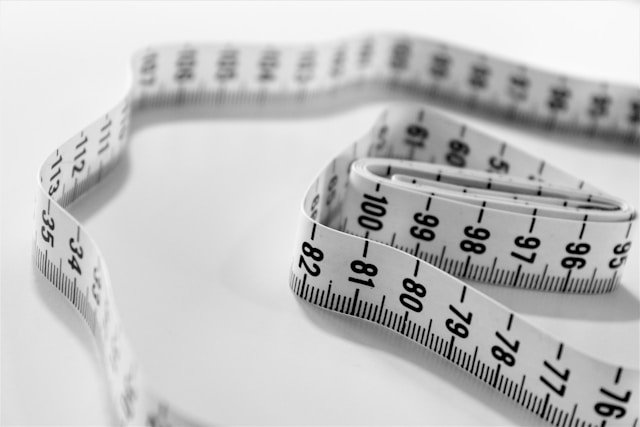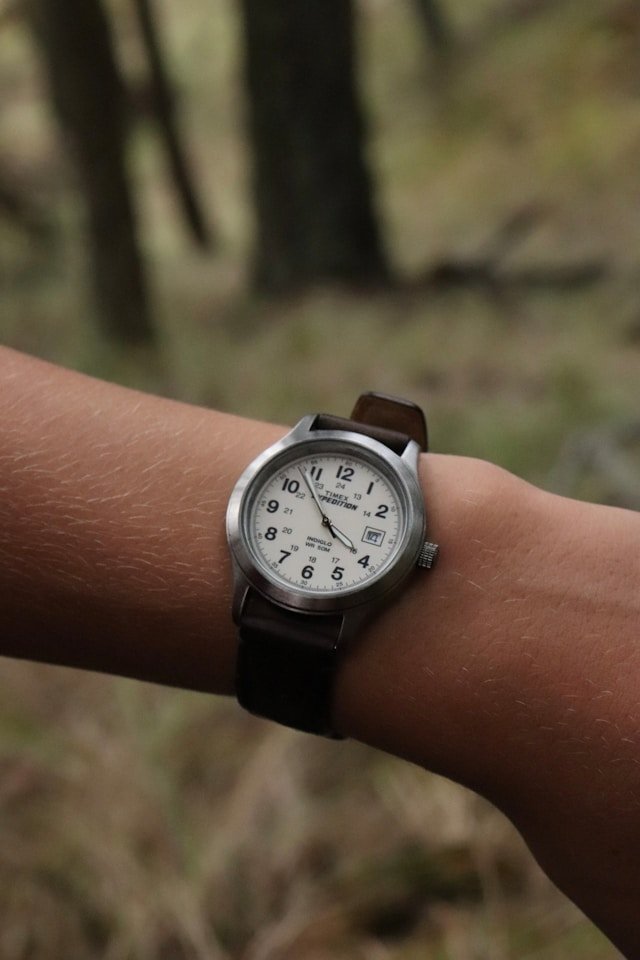
Watches for Men with Smaller Wrists
Disclosure: As an Amazon Associate I earn from qualifying purchases
How to Find the Perfect Timepiece Without Overwhelming Your Wrist
When it comes to watches, size really does matter. While oversized timepieces may look great in glossy adverts, they don’t suit everyone — particularly men with smaller wrists. The wrong size watch can feel uncomfortable, look unbalanced, and distract from your overall style.
Fortunately, the watch market offers a wealth of options perfectly suited to slimmer wrists. From elegant dress watches to compact divers, you can find timepieces that provide comfort, proportion, and personality without overpowering your wrist.

In this guide, we’ll explore what to look for when buying a watch for smaller wrists, explain key dimensions, and recommend five watch categories and models that strike the perfect balance between style and fit. By the end, you’ll know how to confidently choose a watch that flatters your wrist and enhances your look.
1. Understanding Watch Dimensions
Case Diameter, Lug-to-Lug, and Thickness Explained
Before diving into recommendations, it’s important to understand the measurements that affect how a watch wears on the wrist. This is the most important part of this blog, so make sure you are looking for the right dimentions for your wrist. NOTHING worst than a watch that hangs off someone and not fitted to their body type.
- Case Diameter: The width of the watch across its face. For smaller wrists (under 6.5 inches), aim for 36mm–40mm. Larger cases may look oversized.
- Lug-to-Lug Distance: The measurement from the top of one lug (the part where the strap attaches) to the bottom of the opposite lug. This is arguably more important than diameter. For smaller wrists, lug-to-lug under 47mm ensures comfort.
- Case Thickness: The height of the watch from case back to crystal. Slimmer watches (under 12mm) sit more comfortably under sleeves and look better proportioned.
- Strap Width: Narrower straps (18–20mm) tend to suit smaller wrists and look more balanced.
Understanding these dimensions is crucial, as two watches with the same case diameter can wear very differently depending on lug length and thickness.
2. What to Look For When Buying a Watch for Smaller Wrists
Key Features to Consider
When shopping for a watch that complements a smaller wrist, consider the following:
- Proportions over size – Don’t just check diameter. A 39mm watch with short lugs can fit better than a 36mm with long lugs.
- Strap choice – Leather straps and NATO straps can reduce bulk, while metal bracelets may feel heavier. Look for bracelets with tapering links to slim down the profile.
- Dial design – Clean, simple dials appear smaller, while busy dials can look crowded on smaller wrists.
- Case shape – Round cases are classic, but tonneau or rectangular designs (like the Cartier Tank) can be flattering alternatives.
- Weight and thickness – Lightweight watches sit more comfortably on slimmer wrists.
By paying attention to these factors, you’ll find a watch that not only looks right but feels right.
All of the above is crucial, so is knowing the size of your wrist. Make sure you measure it! I’ll leave a quick link below so can can find out.
- Thick tape measure with a soft touch feel which is comfortable to use. Suitable for measuring round and flat surfaces. I…
- Easy to read design which is user friendly, accurately printed CM and Inches measurements
- The tape has large clear black text and markings making it easy to read and use
3. Dress Watches for Smaller Wrists
Slim, Elegant, and Perfect Under a Cuff
Dress watches are traditionally smaller, making them an excellent choice for men with smaller wrists. Their slim cases and clean dials offer understated elegance without bulk.
Top Picks:
- Orient Bambino (38–40mm) – A classic Japanese automatic with vintage charm.
- Seiko Presage Cocktail Time (SRPB43 at 40.5mm) – Slightly larger but with short lugs, it wears smaller.
- Tissot Everytime Swissmatic (38mm) – Minimalist Swiss design, great proportions.
Ideal for office wear, weddings, and formal settings, dress watches are timeless pieces that complement rather than dominate your wrist.
My top pick out of the 3 above:
4. Field Watches for Smaller Wrists
Rugged Yet Compact Everyday Companions
Field watches were originally designed for military use — functional, reliable, and modestly sized. Their simple dials, durable cases, and smaller dimensions make them perfect for smaller wrists.

Hamilton Khaki Field Mechanical (38mm) – A cult favourite, lightweight with vintage military styling.
Seiko 5 Sports Field (36–39mm) – Affordable, rugged, and automatic.
Timex Expedition Scout (38mm) – Budget-friendly with classic field watch appeal.
My top pick out of the 3 above:
5. Dive Watches for Smaller Wrists
Compact Tool Watches with Character
Dive watches are known for chunkier designs, but several models cater to smaller wrists while retaining water resistance and sporty appeal.
Top Picks:
- Seiko SKX013 (38mm) – A smaller sibling to the legendary SKX007, with a perfect fit for smaller wrists.
- Tudor Black Bay Fifty-Eight (39mm) – A luxury option that wears compact and refined.
- Citizen Promaster Diver (BN0150-28E at 42mm but short lugs) – Slightly bigger but very wearable on slim wrists.
Dive watches bring boldness without overwhelming if chosen carefully, especially models with shorter lug-to-lug distances.
Other areas to consider:
Alternative Case Shapes for Smaller Wrists
Going Beyond Round
If you have a smaller wrist but still want something distinctive, alternative shapes are worth exploring. Square and rectangular watches often feel more compact even when the dimensions sound larger on paper.
Top Picks:
- Cartier Tank Solo (31mm x 41mm) – Rectangular elegance, iconic and refined.
- Casio Vintage A158 (34mm) – Affordable retro digital option.
- Jaeger-LeCoultre Reverso (42mm lug-to-lug) – Luxury with a slim, rectangular profile.
Rectangular and tonneau designs offer vintage charm while flattering smaller wrists by reducing dial bulk.
My top pick out of the 3 above:
Straps and Bracelets: The Finishing Touch
How Bands Affect Fit
Choosing the right strap can dramatically improve how a watch looks on your wrist.
- Leather straps: Light, flexible, and slimming — ideal for dress watches.
- NATO straps: Comfortable, but can add height, so best with thinner cases.
- Tapered bracelets: Start wider at the lugs and narrow towards the clasp, helping watches look less bulky.
For smaller wrists, avoid overly thick or wide straps. An 18–20mm strap width is typically proportionate.
Conclusion: Confidence in Proportion
Finding the right watch for smaller wrists is all about proportion, comfort, and style. By focusing on dimensions — particularly case diameter, lug-to-lug, and thickness — you can avoid bulky designs that overwhelm your wrist.
Whether you’re after a refined dress watch, a rugged field companion, or a stylish diver, there are excellent choices out there designed with smaller wrists in mind. Remember that fit matters more than numbers alone: a well-designed 39mm watch can wear better than a poorly designed 36mm.
Ultimately, the perfect watch should feel comfortable, look balanced, and reflect your personality. With today’s wide selection, men with smaller wrists can easily find timepieces that combine style and proportion — proving that in watches, sometimes less really is more.




